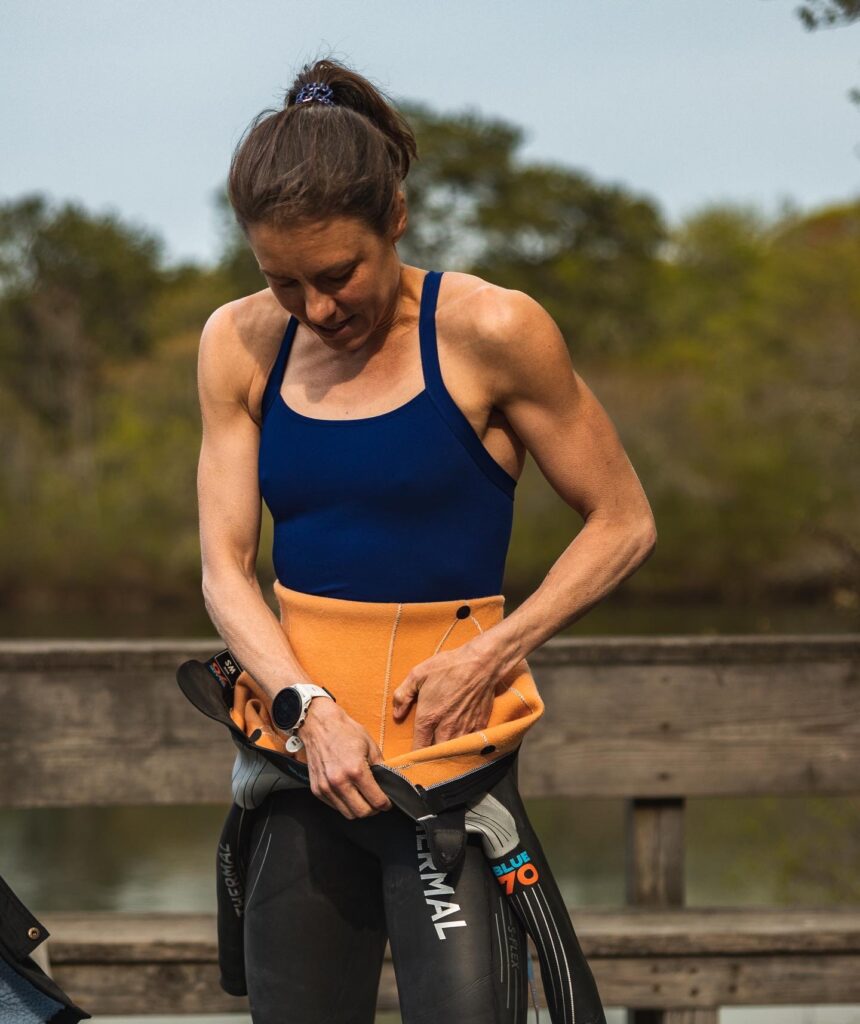6 Strategies to help you get over your open water swim fears
Is open water chaos cramping your triathlon style?
 Photo by:
Kevin Mackinnon
Photo by:
Kevin Mackinnon
We’ve all been there – the frenzied mass start, the disorienting chop and waves, the constant physical contact. Open water swimming can feel like a chaotic battle just to keep your head above water, let alone preserve energy for the bike and run. But what if you could turn this weakness into a strength?
Here are 6 ways to do so:
1. Become a drafting pro:
- Practice swimming in tight packs during training to get comfortable with the physical contact and turbulence.
- Identify optimal drafting positions by reading the water flow and patterns of other swimmers.
- Utilize drafting to save five to 10 per cent of your energy output during the swim, preserving leg power for the bike and run.
2. Learn and use the other strokes:
- Develop the ability to seamlessly transition between freestyle, backstroke and breaststroke techniques.
- Practice swimming with different stroke styles in variable conditions, such as choppy water or strong currents.
- Maintain efficient propulsion by adapting your stroke to the demands of the open water environment.
3. Get strong on land:
- Complement pool training with exercises targeting the core, shoulders and lats, such as pull-ups, resistance band work and core stability drills.
- Build muscular power and endurance to power through the open water with increased force and reduced fatigue.
- Incorporate swim-specific strength training two to three times per week to develop the necessary physical attributes for open water swimming.
Marathon swim champion explains how to master open water swimming
4. Sight often, but efficiently
- Practice in the pool during your indoor sessions for at least 25 per cent of each session
- Practice sighting drills that simulate race-day scenarios, such as navigating around buoys or other swimmers.
- Develop the ability to quickly lift your head, spot landmarks and reorient yourself without disrupting your swim stroke.
5. Fuel Right:
- Practice your race-day fueling plan in training, experimenting with different gel types, volumes and timing.
- Test your nutrition strategy in open water conditions to identify any potential stomach issues or performance impacts.
- Dial in your optimal fuel intake to maintain energy levels and avoid bonking during the swim, bike and run.

6. Change your Mindset:
- Cultivate a mindset that embraces the unpredictability, physicality and sensory overload of open water swimming.
- Visualize yourself navigating the challenges with confidence, focus and determination.
- Reframe any discomfort or anxiety as excitement and opportunity, using positive self-talk and one-word resets. Feel anxious? Try repeating a word that will help calm you or reframe your focus.
Easy open-water workouts to keep swimming fun and improve your fitness
By applying these strategies, you can transform the chaos of open water swimming into a competitive advantage. With the right mindset and technical skills, the open water can become your domain, setting you up for a great day and race.
Angela Naeth is a professional triathlete, gravel cyclist, and coach. She holds a Masters degree in Physical Therapy and Exercise Science, as well as a Bachelors degree in Health Science. Naeth has an extensive background in endurance sports and uses her expertise to help athletes of all levels reach their full potential. To learn more, visit her website at www.angelanaethcoaching.com.
